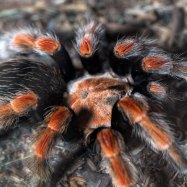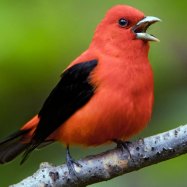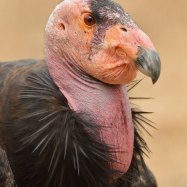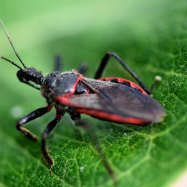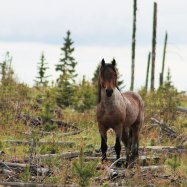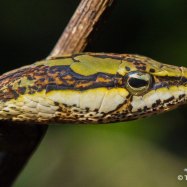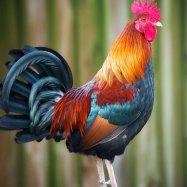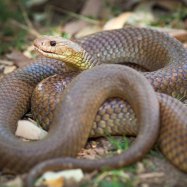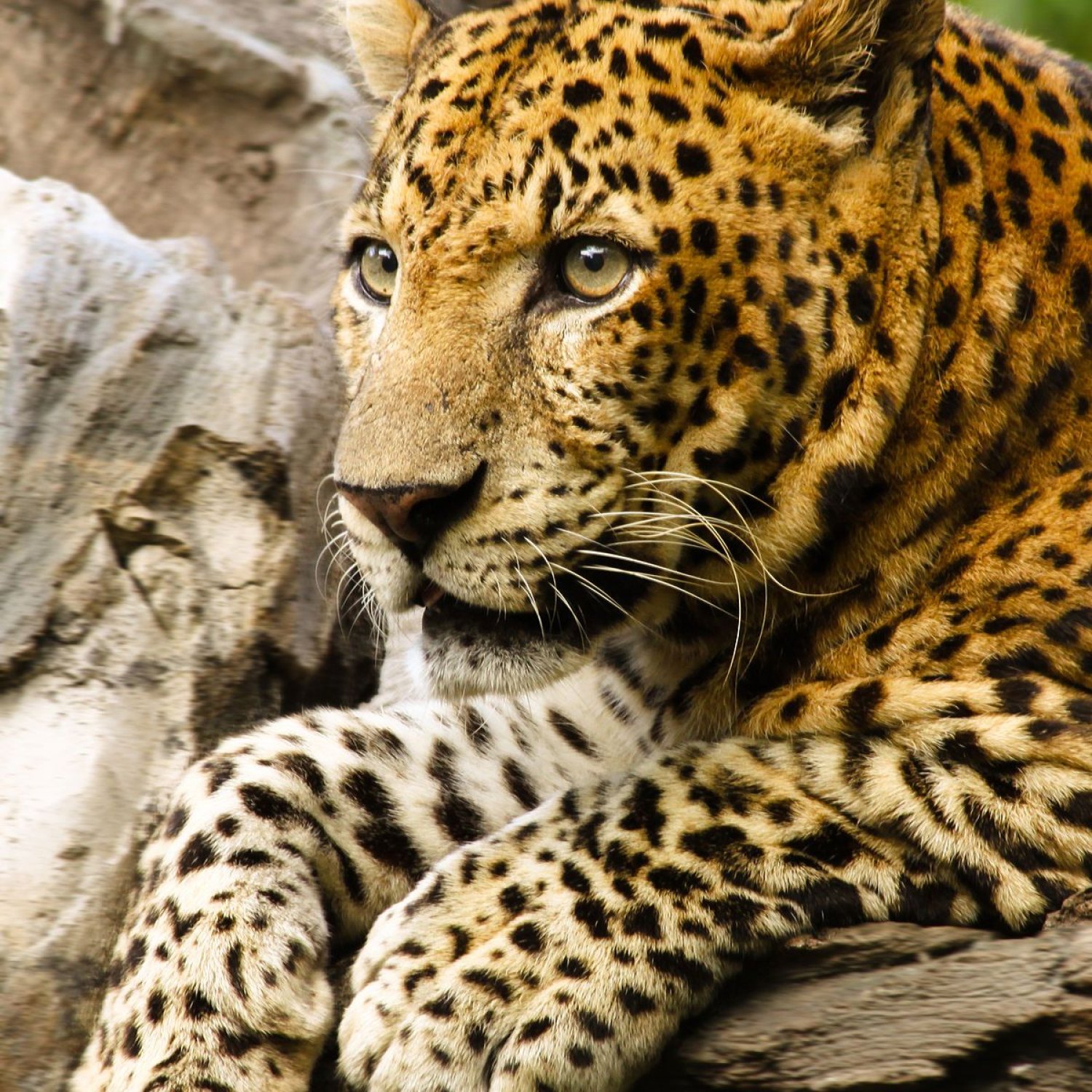
Javan Leopard
1.2 to 2.1 meters
The Javan Leopard, or Panthera pardus melas, is a beautiful and elusive cat found on the Java Island. Belonging to the Felidae family, it can reach lengths of 1.2 to 2.1 meters and has a sleek and muscular body shape. Sadly, this magnificent animal is critically endangered due to habitat loss and poaching. Let's work together to protect these stunning creatures for future generations to admire. #JavanLeopard #EndangeredSpecies #WildlifeConservation
Animal Details Summary:
Common Name: Javan Leopard
Kingdom: Animalia
Habitat: Rainforests, montane forests, and mangrove swamps
The Javan Leopard: The Magnificent Forest Hunter of Java Island
The rainforests of Java Island in Indonesia are home to a majestic and elusive creature – the Javan leopard, also known as Panthera pardus melas. This charismatic feline is a subspecies of the leopard family, and it is found exclusively on the island of Java, making it one of the rarest and most endangered big cats in the world.From its scientific name to its physical and behavioral characteristics, every aspect of the Javan leopard is unique and fascinating. Let's delve deeper into the world of this stunning animal and discover what makes it one of the most prized possessions of the Indonesian forests Javan Leopard.
The Javan Leopard: Scientific Classification and Taxonomy
The Javan leopard belongs to the kingdom Animalia, the largest and most diverse taxonomic rank, including all animals. It falls under the phylum Chordata, which includes animals with a notochord, a flexible, elongated rod that supports their bodies. As a mammal, the Javan leopard falls under the class Mammalia, which means it has fur or hair and produces milk to nourish its young.At the order level, the Javan leopard belongs to Carnivora, which includes all meat-eating animals. Finally, at the family level, it belongs to Felidae, a group of carnivores that includes cats, such as lions, tigers, and domestic cats. As a subspecies of the leopard, the Javan leopard shares many similarities with its cousins but has distinct characteristics that set it apart.
Home is Where the Heart is: Habitat and Distribution
The Javan leopard is a forest dweller through and through, with a wide range of habitats to call home. It can be found in rainforests, montane forests, and even mangrove swamps. However, due to habitat destruction, its range has shrunk significantly over the years, leading to its classification as a critically endangered species Jabiru.Native to Java Island, which is the world's most populous island, the Javan leopard can only be found on this island, making it a highly threatened and sought-after species. It is estimated that fewer than 500 individuals exist in the wild, making it one of the rarest subspecies of leopards.
A Predator and a Hunter: Feeding Habits of the Javan Leopard
As a carnivorous animal, the Javan leopard's diet mainly consists of animals such as deer, wild boar, primates, and smaller mammals. Due to its elusive nature, it is challenging to observe the hunting and feeding behaviors of this beautiful creature. However, studies have shown that it is an opportunistic hunter, meaning it will hunt whatever prey is available in its environment.The Javan leopard is a solitary hunter, with its diet consisting of mainly medium-sized animals. Unlike lions who hunt in groups, this subspecies of leopard prefers to rely on its stealth and agility to capture its prey. It uses its excellent camouflage and agility to stalk and pounce on its unsuspecting victims. Once it has secured its prey, it will drag it up a tree to protect it from other predators.
Golden Elegance: Physical Characteristics of the Javan Leopard
The Javan leopard's physical appearance is perhaps its most distinctive feature, making it stand out among other big cats. Its coat is a beautiful golden color, with dark spots covering its entire body. This unique coat pattern provides excellent camouflage in its forest habitat, making it almost invisible to its prey.The Javan leopard's body shape is sleek, slender, and muscular, making it an incredibly agile and fast hunter. It has long, powerful legs and a long tail that helps it balance during hunting bouts. Its facial features are also striking, with piercing yellow-green eyes and distinctive black tear marks running down its cheeks.
Measuring Up: Length and Weight of the Javan Leopard
The Javan leopard is considered a medium-sized big cat, with its length ranging from 1.2 to 2.1 meters from head to tail. This makes it slightly smaller than other leopard subspecies, such as the African and Amur leopard.In terms of weight, the Javan leopard can weigh anywhere between 40 to 90 kilograms, with males usually being larger and heavier than females. While this may seem like a significant weight difference, it allows both males and females to excel in their respective roles, with males being more dominant in hunting and protecting their territory, and females being skilled at caring for their young.
The Pinnacle of Evolution: Javan Leopard Adaptations
As a highly adaptable species, the Javan leopard has evolved to thrive in its unique environment. Its coat color and pattern help provide excellent camouflage, while its agility and speed make it a top predator in the dense forests of Java. Additionally, its keen senses, including its exceptional sight and hearing, help it survive in its challenging habitat.Furthermore, the Javan leopard has adapted to survive in an environment that has undergone drastic changes over the years, due to human activities. It has developed the ability to live in fragmented habitats, making use of whatever resources are available to survive. However, this has also made them highly vulnerable to human activities, such as poaching and habitat destruction.
Conservation Efforts for the Javan Leopard
The Javan leopard faces many threats, including habitat loss, human-wildlife conflict, and poaching. As a result, it has been classified as critically endangered by the International Union for Conservation of Nature (IUCN). However, several conservation efforts have been put in place to protect and preserve this magnificent species.One of the key efforts is the establishment of protected areas and national parks, such as the Ujung Kulon National Park, which is home to a significant population of Javan leopards. These protected areas provide a safe haven for the animals and help regulate human activity within their habitats.
Additionally, organizations like the Indonesian Forum for the Preservation of Endangered Species (PROFAUNA) are actively involved in raising awareness and educating local communities about the importance of protecting the Javan leopard and its habitat.
Conclusion
In conclusion, the Javan leopard is a unique and remarkable creature that calls the forests of Java Island its home. From its majestic appearance to its elusive nature, this subspecies of leopard is undoubtedly an animal worth admiring and protecting. As humans, it is our responsibility to ensure that this magnificent forest hunter continues to thrive and roam freely in its natural habitat, for generations to come.

Javan Leopard
Animal Details Javan Leopard - Scientific Name: Panthera pardus melas
- Category: Animals J
- Scientific Name: Panthera pardus melas
- Common Name: Javan Leopard
- Kingdom: Animalia
- Phylum: Chordata
- Class: Mammalia
- Order: Carnivora
- Family: Felidae
- Habitat: Rainforests, montane forests, and mangrove swamps
- Feeding Method: Carnivorous
- Geographical Distribution: Java Island in Indonesia
- Country of Origin: Indonesia
- Location: Java Island
- Animal Coloration: Golden or tawny coat with dark spots
- Body Shape: Sleek and muscular
- Length: 1.2 to 2.1 meters
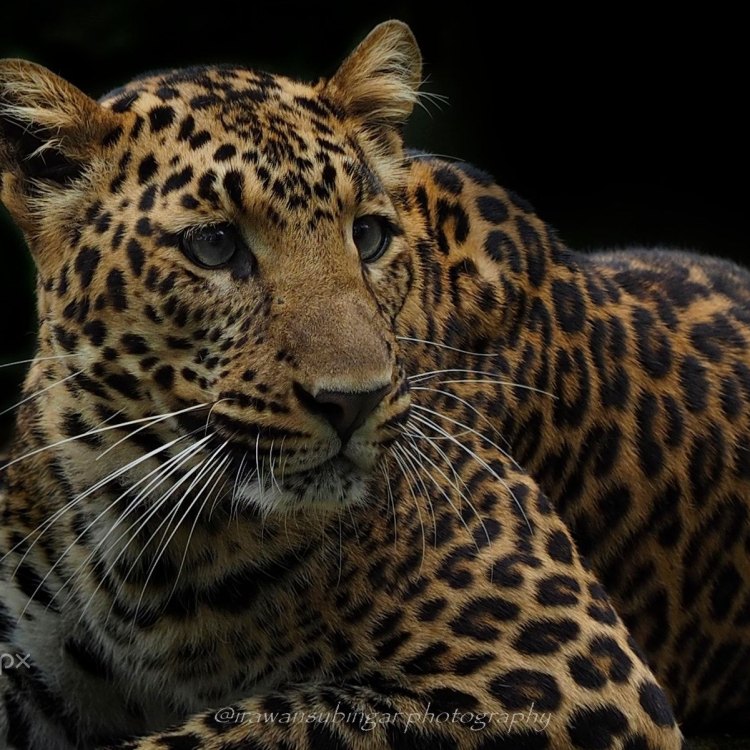
Javan Leopard
- Adult Size: Medium-sized
- Average Lifespan: 12 to 15 years
- Reproduction: Sexual
- Reproductive Behavior: Mating season occurs from January to March
- Sound or Call: Unknown
- Migration Pattern: Non-migratory
- Social Groups: Solitary
- Behavior: Nocturnal and secretive
- Threats: Habitat loss, poaching, and illegal wildlife trade
- Conservation Status: Critically Endangered
- Impact on Ecosystem: Top predator, helps maintain balance in the ecosystem
- Human Use: Hunted for its skin and bones
- Distinctive Features: Large rosette-like markings on its fur
- Interesting Facts: 1. Javan leopards are one of the rarest subspecies of leopard in the world. 2. They have adapted to live in varied habitats, including rainforests and mangrove swamps. 3. Javan leopards are skilled climbers and swimmers. 4. Their population is severely declining due to various threats. 5. Conservation efforts are being made to protect the remaining Javan leopards.
- Predator: One of the top predators in its habitat
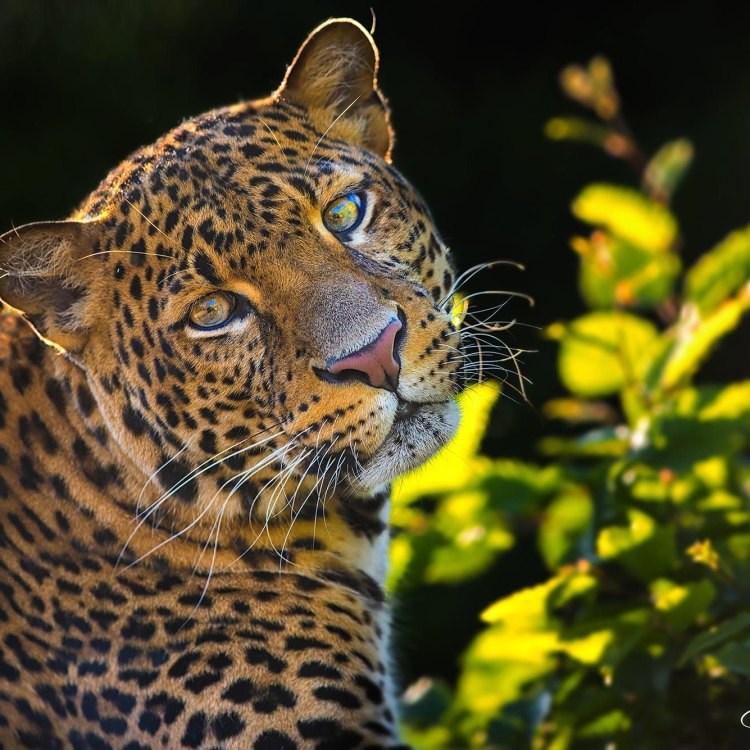
Panthera pardus melas
The Magnificent Javan Leopard: A Critically Endangered Feline
As you venture through the dense forests of Java, you may catch a glimpse of a magnificent creature – the Javan leopard. This elusive feline, also known as the Sunda leopard, resides in the island of Java, Indonesia, and is one of the rarest and most endangered subspecies of leopard in the world.Adult Size and Average Lifespan
The Javan leopard falls under the medium-sized cat category, with males weighing between 60 to 91 pounds and females between 55 to 75 pounds. They can grow up to 6 feet in length, including their tail PeaceOfAnimals.Com. This elegant predator has a distinctive golden-yellow coat with large rosette-like markings, making it truly a sight to behold.
On average, Javan leopards have a lifespan of 12 to 15 years in the wild. However, due to several threats, their lifespan is significantly shorter in captivity.
Reproduction and Mating Season
Like most big cats, Javan leopards are sexual reproducers, with mating season occurring from January to March. During this time, males compete for females by marking their territory with urine and making loud roars to attract potential mates. Once a pair has successfully mated, the female will give birth to 2-3 cubs after a gestation period of about 100 days.
Nocturnal and Solitary Creatures
Javan leopards are nocturnal and elusive creatures, making it challenging to track and study them. They are solitary animals and only come together during the breeding season or when raising cubs. Their solitary nature can also be attributed to their dwindling population, as there are not many individuals left for them to socialize with Jack Chi.
Adapted to Various Habitats
The Javan leopard has adapted well to living in various habitats, including rainforests, mountainous regions, and even mangrove swamps. This impressive ability makes them adaptable to changes in their environment, but it also means they face threats from various factors.
Threats and Conservation Efforts
The Javan leopard is listed as Critically Endangered on the International Union for Conservation of Nature (IUCN) Red List. The population of this subspecies has significantly declined over the years due to several threats, including habitat loss, poaching, and illegal wildlife trade.
Habitat loss is one of the major threats to the Javan leopard. As human populations increase, forests are cleared for agriculture and development, reducing the available habitat for these felines. This also leads to human-leopard conflicts as the cats are forced to venture into human settlements in search of food.
Poaching and illegal wildlife trade also pose a significant threat to the Javan leopard. Its beautiful coat and bones are highly valued in the traditional medicine market, leading to a high demand for these animals.
To combat these threats, conservation efforts are being made to protect the remaining Javan leopards. Strict laws and regulations have been implemented to prevent habitat destruction and poaching. Additionally, captive breeding programs have been established in an attempt to increase the population of these graceful cats.
Role in Ecosystem
The Javan leopard is a top predator in its habitat, playing a crucial role in maintaining the balance of the ecosystem. As an apex predator, it helps regulate the population of prey species, preventing overgrazing and maintaining the health of the ecosystem.
Human Use and Interesting Facts
Unfortunately, humans have had a negative impact on the Javan leopard. They have been hunted for their skin and bones, leading to a decline in their population. But did you know that...
1. Javan leopards are one of the rarest subspecies of leopards in the world, with only an estimated 250 individuals remaining in the wild.
2. They are skilled climbers and swimmers, allowing them to access different areas and habitats in search of prey.
3. Javan leopards are master ambush predators, using their camouflage and agility to sneak up on their prey.
4. Their rosette-like markings help them blend into their surroundings, making them even more elusive and difficult to spot.
5. Despite their dwindling numbers, Javan leopards continue to inspire awe and fascination in those who are lucky enough to spot them in the wild.
In Conclusion
The Javan leopard may be a rare and endangered species, but it is a remarkable creature that deserves protection and recognition. Its adaptability, hunting skills, and importance in maintaining the balance of the ecosystem make it a vital part of the natural world. As we look towards the future, it is our responsibility to work towards conserving this magnificent feline and its unique characteristics for generations to come. Let us take action now before it's too late and ensure the survival of the Javan leopard.
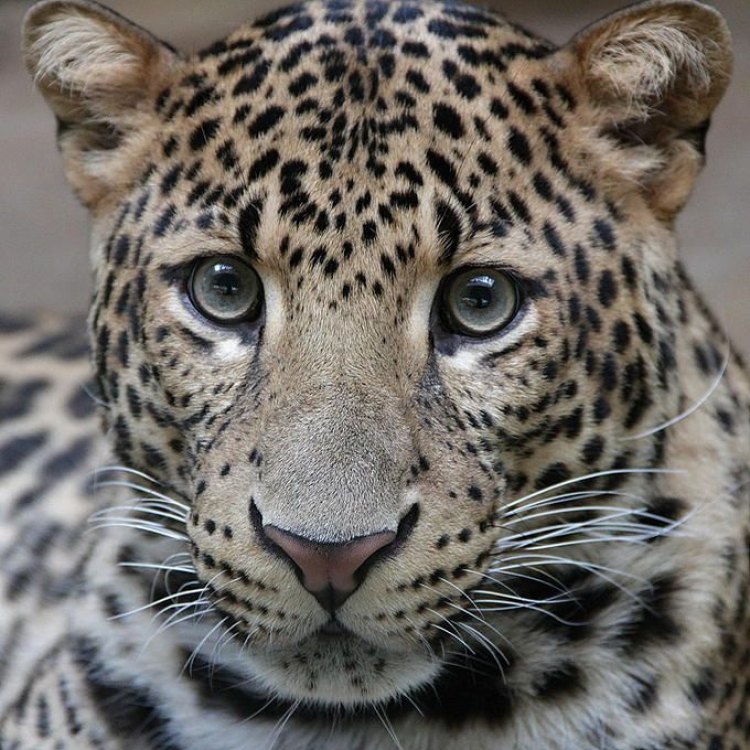
The Javan Leopard: The Magnificent Forest Hunter of Java Island
Disclaimer: The content provided is for informational purposes only. We cannot guarantee the accuracy of the information on this page 100%. All information provided here may change without prior notice.



